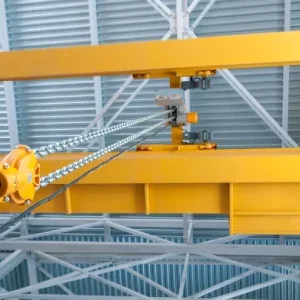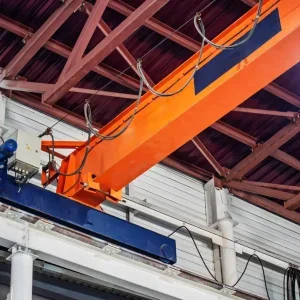Typical applications include vertical height positioning of industrial cranes, positioning of container grippers in ports, and vertical positioning of overhead conveyors and gantries in warehouses and factories. It can be used with both stationary and mobile machines, both indoors and outdoors.
The Sick DT80 laser distance sensor uses a class 2 eye-safe laser to detect, measure and position. It will detect an object that has up to 90% remission (a measurement of diffuse reflection on surfaces, expressed as a percentage) at a distance of 80m. For objects with very dark surfaces and only 6% remission, it achieves a range of 14m. The product can be configured in a variety of combinations of distance and remission, and Sick claims it achieves accuracy of +/- 2mm with a resolution of 0.1mm at ranges up to 80m.
The DT80 is set up via the icon-supported colour display. Alternatively, the DT80 can be configured using Sick’s HTML-based Sopas engineering tool or the sensor-monitoring technology IO-Link.
IO-Link connectivity also enables data to be transferred and exchanged between sensors, actuators and operational technology (OT) control systems. Using an IO-Link-Master with OPC Unified Architecture – a machine-to-machine communication protocol – data from the DT80 can be exported into on-premise and cloud-based analytics and remote diagnostics software – for example, for condition monitoring.
At 65x33x57mm, Sick says the DT80 is one of the most compact laser distance sensors on the market. Its cast zinc housing, durable sensor window made from PMMA, IP65 and IP67 protection, and “high shock and vibration resistance, ensure it operates reliably under the harshest industrial and environmental conditions”.
“With a robust metal housing, the DT80 delivers resilient performance despite challenging environmental conditions, such as mechanical vibrations, strong ambient light or extreme temperatures.”
“Sick’s development programme for the DT80 laser distance sensor has perfected our… measurement technology and raised the bar in this class of mid to long-range distance sensing,” added Nick Hartley, the company’s UK market product manager for distance measurement. “Achieving the best possible precision and repeatability is a constant challenge for many industrial measuring and positioning tasks.”
Since its housing and connectivity concept mirror Sick’s other DT distance sensors, users can upgrade to the Sick DT80 to take advantage of its greater precision and range, the company concluded.
Sign up for FREE weekly newsletter
Sign up for FREE digital edition of the magazine






